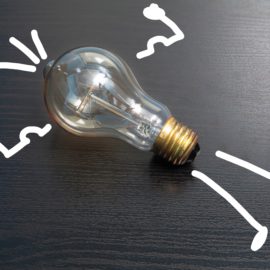

This article is an excerpt from the Shortform book guide to "Perennial Seller" by Ryan Holiday. Shortform has the world's best summaries and analyses of books you should be reading.
Like this article? Sign up for a free trial here .
Is Ryan Holiday’s Perennial Seller worth reading? How do you create a product that will provide value and bring profit for many years to come?
Ryan Holiday’s Perennial Seller is light on how to actually create a new product. Unlike other “thought leaders” and experts who are focused on shortcuts to success (social media marketing, raising capital, hacking bestseller lists), Holiday comes at it from a different angle—creating something that will stand the test of time.
Below is a brief overview of Perennial Seller: The Art of Making and Marketing Work That Lasts by Ryan Holiday.
Perennial Seller: The Art of Making and Marketing Work That Lasts
How do you create something that lasts for 10 years? This is a question that Ryan Holiday aims to answer in his 2017 book Perennial Seller.
Perennial sellers are the kinds of products we return to over and over again; that we recommend to others, even if they’re no longer trendy.
Ryan Holiday’s Perennial Seller gives these examples of perennial products:
- Shawshank Redemption had a poor box office but has grossed over $100MM since it left theaters.
- Many restaurants have been open for decades – LA’s Original Pantry Cafe, NYC’s Katz’s Deli.
- Iron Maiden has sold 85 million albums over 4 decades and continues to sell out concerts.
- Ted Turner bought MGM’s classic film library when people didn’t value them (who would watch these old films?) and launched Turner Network Television and Turner Classic Movies.
- Star Wars tells the classic tale of Joseph Campbell’s hero’s journey and continues to be captivate new generations.
- In 2015, catalog albums (>18 months old) outsold all new releases for the first time in music history.
- “Happy Birthday” song – before this, what were people supposed to do at a birthday party?
Every day something lasts, the chances that it will continue to last increase (this is known as the Lindy effect).
Perennial Seller is an attempt to codify the process of creating things that stand the test of time. Is there a common creative mindset? How does it differ from work that’s popular one day and gone the next? How do you capture an audience, build a platform, and develop marketing channels that endure?
Below is a quick summary of the key takeaways from Perennial Seller by Ryan Holiday.
The Creative Mindset
Perennial Seller begins with qualities of an effective creative process, and expectations to have as a creator.
First, Holiday urges the reader to examine their motivation for creating. It should be because you have something you desperately need to say or are burning to solve a problem. You can’t not do this.
- If you’re doing this only out of curiosity or to become rich/famous, you won’t have the willpower to drive through the darkest valleys of the creation process. And you’re competing against people who are pouring their soul into their works.
- Once you define your mission, you must forsake all other missions. Creation is so difficult that you need to avoid watering down your efforts with other projects.
Next, you actually need to do it.
- Don’t dream about it or talk about it. Ideas are cheap. There are oceans of people who “know they could be big hits, who have brilliant ideas, if only [their excuse].” These are people who want to have a success; they don’t want to create a success.
- Don’t think about being “the idea person” and leaving the cruft work to others. No one cares more about the creation than you. No one else knows the product and the target audience as much as you. You need to handle the responsibility of creating, editing, positioning, marketing, and selling your creation.
Creation takes place over long periods of time and require dozens of iterations to polish. Don’t fall for the myth that great works are done spontaneously in one sitting.
- Get an editor who can give objective critiques. It’s very rare for someone to create a brilliant work in her own mind.
When creating and marketing, define your audience and purpose carefully. “This is a ____ that does ____ for ____ (target user).”
- Be OK with polarizing the population. You want a fraction of the audience to love your work (and a fraction to hate it), not the whole audience to be blase.
- Think about one specific person you’re creating this for. This will help you target your work.
Marketing
Marketing is then about finding your target users and ways to reach them.
- The purpose of creating buzz at launch is to increase the pool of people who will refer your product to their friends. The product does the heavy lifting of marketing afterward. A product with a big launch but doesn’t sustain word-of-mouth referrals after is not going to endure.
Every new user has an activation barrier to trying your product – money, time, energy, mental, opportunity, social cost. Your goal is to lower this barrier as much as possible, so they try your product and have a chance to see the value.
- Consider lowering the price of your product or making it free somehow.
- Convey the benefits and social signaling to reduce the barrier further.
Assume: “Nobody cares about what I’ve made. They don’t know what it is. They can easily do without my work.” Humility works harder than ego.
When trying to reach users/influencers/journalists, always think, “what’s in it for them?”
- Journalists are dying for a scoop on a unique story.
- Influencers want to be seen as tastemakers and will promote products that their audience will love.
Keep Creating
Once you create one great work, what do you do? Create another.
- Each additional great work lifts all the other work you’ve created. People who liked your first work have more to enjoy; people who discover you anew can enjoy your back catalog.
- Would the Hobbit films be as famous without Lord of the Rings? Would we care about Shakespeare’s sonnets were it not for his plays?
The ideal situation to have is a loyal following of people who love your work and will buy every single thing you produce.
- A platform is the combination of tools, relationships, access, and audience to spread your creative work repeatedly over the course of a career.
- Ideally, you have a direct relationship with your followers, through a medium you control. Ryan Holiday recommends an email list above all, because of its longevity.

———End of Preview———
Like what you just read? Read the rest of the world's best book summary and analysis of Ryan Holiday's "Perennial Seller" at Shortform .
Here's what you'll find in our full Perennial Seller summary :
- How to create enduring products with a loyal following
- Why word of mouth is the only marketing channel that endures time
- What to do after you've created a great work






